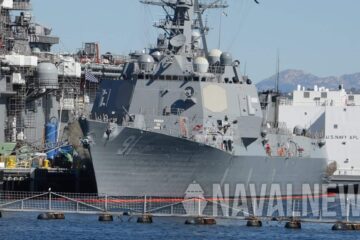This is one of two F/A-18 Block III test jets that rolled out of final assembly in early May. The U.S. Navy will use these jets for carrier testing of Block III capabilities. Upgrades include the advanced cockpit system’s new 10-by-19 inch touchscreen display. Boeing is set to deliver the two test jets to the U.S. Navy in the coming weeks. Operational Block III jets will be delivered to the U.S. Navy in 2021.
About F/A-18 Block III Super Hornet

Boeing received a whopping $4 Billion U.S. Navy contract in March last year for multi-year procurement of 78 F/A-18 Block III Super Hornet strike fighters (61 single-seat E and 17 two-seat F), delivered through 2024.
The Block III configuration adds capability upgrades that include enhanced network capability, longer range, reduced radar signature, an advanced cockpit system and an enhanced communication system. Boeing started converting existing Block II Super Hornets to Block III this year. The fighter’s life will be extended from 6,000 hours to 10,000 hours.
The Block III Super Hornet has shoulder mounted conformal fuel tanks. They can carry 3,500 pounds of additional fuel and they reduce drag, allowing the aircraft to operate longer, go faster and/or carry more weight.
Inside the cockpit, the advanced cockpit system has replaced the buttons and knobs, similar to a large tablet. The new 10-by-19 inch touchscreen display provides the pilot with the capability to see, track and target multiple long range targets generated by the common tactical picture.
The block II IRST will be able to detect threats at long range without having to depend on radar which may be jammed. The block II IRST will generate a multi-ship, common tactical picture at long range, allowing the Super Hornet to operate as a smart sensor node on the network.







